By: Bruce Pon
People are rightly angry and frustrated. No one is a winner in this current state of unease, lack of information and transparency, and mudslinging. Ocean doesn’t see the benefit of throwing around unfounded and false allegations or the attempts to sully the reputations of the projects and people — it just damages both the ASI and Ocean communities unnecessarily.
Ocean has chosen to remain silent until now, out of respect for the ongoing legal processes. But given so many flagrant violations of decency, Ocean would like to take an opportunity to rebut many publicly voiced false allegations, libels, and baseless claims being irresponsibly directed towards the Ocean Protocol project. The false and misleading statements serve only to further inflame our community, while inciting anger and causing even more harm to the ASI and Ocean communities than is necessary.
There are former $OCEAN token holders who converted to $FET and who now face the dilemma of whether to stay with $FET, return to $OCEAN, or to liquidate and be completely done with the drama.
Rather than throw unsubstantiated jabs, I would like to provide a full context with supporting evidence and links, to address many of the questions around the ASI Alliance, Ocean’s participation, and the many incorrect allegations thrown out to muddy the waters and sow confusion among our community.
This blogpost will be followed up with a claim-by-claim rebuttal of all the allegations that have been directed towards Ocean since October 9, 2025 but for now, this blog gives the context and Ocean’s perspective.
I encourage you to read it all, as it reflects months of conversations that reveal the context and progression of events, so that you can best understand why Ocean took steps to chart a separate course from the ASI Alliance. We hope the ASI Alliance can continue its work and we wish them well. Meanwhile, Ocean will go its own way, as we have every right to do.
These are the core principles of decentralization — non-coercion, non-compulsion, individual agency, sovereign property ownership and the power of you, the individual, to own and control your life.
Table of Contents
∘ 1. The Builders
∘ 2. June 2014 — Audacious Goals
∘ 3. January 2024 — AI Revolution in Full Swing
∘ 4. March 2024 — ASI Alliance
∘ 5. April 2024 — A Very Short Honeymoon
∘ 6. May 2024 — Legal Dispute Delays the ASI Launch
∘ 7. June 2024 — Re-Cap Contractual Obligations of the ASI Alliance
∘ 8. August 2024 — Cudos Admittance into ASI Alliance
∘ 9. December 2024 — SingularityNET’s Spending, Declining $FET Token Price and the Ocean community treasury
∘ 10. January 2025 — oceanDAO Shifts from a Passive to an Active Token Holder
∘ 11. May 2025 — oceanDAO Establishes in Cayman
∘ 12. June 2025 — Fetch’s TRNR “ISI” Deal
∘ 13. June 2025 — oceanDAO becomes Ocean Expeditions
∘ 14. June 2025 — ASI Alliance Financials
∘ 15. July 2025 — Ocean Expeditions Sets Out to Diversify the Ocean community Treasury
∘ 16. August 2025 — Ocean Requests for a Refill of the $OCEAN/$FET Token Migration Contract
∘ 17. August 2025 — A Conspiracy To Force Ocean to Submit
∘ 18. October 2025 — Ocean Exits the ASI Alliance
∘ 19. Summary
The Builders
Trent and I are dreamers with a pragmatic builder ethos. We have done multiple startups together and what unifies us is an unquenchable belief in human potential and technological progress.
To live our beliefs, we’ve started multiple companies between us. One of the most rewarding things I’ve done in my life is to join forces with, and have the honor to work with Trent.
Builders create an inordinate amount of value for society. Look at any free and open society where capital is allowed to be deployed to launch new ideas — they thrive by leveraging the imagination, brainpower and hard work needed to bring about technological progress. These builders attract an ecosystem of supporters and services, but also as is natural, those who seek to earn easy money.
Builders also start projects with good faith, forthrightness and a respect for the truth, since everyone who has played this game knows that the easiest person to lie to is yourself. So, it’s best to constantly check assumptions and stand grounded on truth, even if wildly uncomfortable. Truth is always the best policy, sometimes because it is the hardest path. It also means that one doesn’t need to live a web of lies, in a toxic environment and constantly wondering when the lie catches up with you.
Builders focus on Win-Win outcomes, seeking to maximize value for everyone in the game, and make the best of bad situations by building our way through it. No one wants to waste time, with what limited time one has on Earth, least of all, to leave the world worse off for being in it. We all want to have a positive impact, however small, so that our existence has meaning in the void of the cosmic whole.
June 2014 — Set Audacious Goals
Twelve years ago, Trent and I decided to try something audacious — to build a global, decentralized network for data and AI that serves as a viable alternative to the centralized, corrupted and captured platforms. We had been inspired by Snowden, Assange and Manning, and horrified to learn what lies we’d been told. If successful, we could impact the lives of millions of developers, who in turn, could touch the lives of everyone on earth. It could be our technology that powered the revolution.
Trent had pulled this off before. In a prior startup, Trent was a pioneer at deploying AI at scale. His knowledge and the software he’d built helped to drive Moore’s Law for two decades. Every single device you hold or use has a small piece of Trent’s intellect, embedded in at the atomic level to make your device run so you can keep in touch with loved ones, scroll memes, and do business globally.
We’d learnt from the builders of the Domain Name System (DNS), Jim Rutt and David Holtzman who are legends in their own right, that the most valuable services on earth are registries — Facebook for your social graph, Amazon for purchases, and, surprisingly, governments with all the registry services they provide. We delved into the early foundations of the Internet and corresponded with Ted Nelson, one of the architects of our modern internet in the early 1960’s. Ted was convinced that the original sin of the internet was to strip away the “ownership” part of information and intellectual property.
Blockchains restored this missing connection. As knowledge and transactions were all to be ported to blockchains over the next 30 years, these blockchain registries would serve as the most powerful and valuable databases on earth. They were also public, free and open to anyone. A magical epiphany was then made by Trent. It wouldn’t be humans that drew intelligence and insight, it would be AI. The logical users of the eventual thousands of blockchains are AI algorithms, bots and agents.
After 3.5 years on ascribe and then BigchainDB, Ocean was the culmination of work as pioneers in the crypto and blockchain space. Trent saw that the logical endpoint for all these L0 and L1 blockchains was a set of powerful registries for data and transactions. Ocean was our project to build this bridging technology between the existing world (which was 2017 by now) and the future world where LLMs, agents and other AI tools could scour the world and make sense for humans.
January 2024 — AI Revolution in Full Swing
ChatGPT had been released 14 months prior, in November 2022, launching the AI revolution for consumers and businesses. Internet companies committed hundreds of billions to buy server farms, AI talent was getting scooped up for seven-to-nine figure sums and the pace was accelerating fast. Ocean had been at the forefront on a lonely one-lane road and overnight the highway expanded to an eight-lane freeway with traffic zooming past us.
By that time, Trent and I had been at it for 10 years. We’d built some amazing technologies and moved the space forward with fundamental insights on blockchains, consensus algorithms, token design, and AI primitives on blockchains, with brilliant teammates along the way. We’d launched multiple initiatives with varying degrees of adoption and success. We’d seen a small, vibrant community, “The Ocean Navy,” led by Captain Donnie “BigBags”, emerge around data and AI, bound with a cryptotoken — the $OCEAN token.
We were also feeling the fatigue of managing a large community that incessantly wanted the token price to go up, with expectations of constant product updates, competitions, and future product roadmaps. I myself had been on the startup grind since 2008, having unwisely jumped into blockchain to join Trent immediately after exiting my first startup, without taking any break to reflect and recover. By the beginning of 2024, I was coming out of a deep 2-year burnout where it had been a struggle to just get out of bed and accomplish one or two things of value in a day. After 17 years of unrelenting adrenaline and stress, my body and mind shut down and the spirit demanded payment. The Ocean core team was fabulous, they stepped in and led a lot of the efforts of Ocean.
When January 2024 came around, both Trent and I were in reasonable shape. He and I had a discussion on “What’s next?” with Ocean. We wanted to reconcile the competing demands of product development and the expectations of the Ocean community for the $OCEAN token. Trent and I felt that the AI space was going to be fine with unbridled momentum kicked off with ChatGPT, and that we should consider how Ocean could adapt.
Trent wanted to build hardcore products and services that could have a high impact on the lives of hundreds of people to start — a narrow but deep product, rather than aim for the entire world — broad but shallower. The rest of the Ocean team had been working on several viable hypotheses at varying scales of impact. For me, after 12 years of relentless focus in blockchain, I wanted to explore emerging technologies and novel concepts with less day-to-day operational pressure.
Trent and I looked at supporting the launch of 2–5 person teams as their own self-contained “startups” and then carving out 20% of revenue to plow back into $OCEAN token buybacks. We also bandied about the idea of joining up with another mature project in the crypto-space, where we could merge our token into theirs or vice versa. This had the elegant outcome where both Trent and I could be relieved of the day-to-day pressures, offloading the token and community management, and growing with a larger community.
March 2024 — ASI Alliance
In mid-March, Humayun Sheikh (“Sheikh”) reached out to Trent with an offer to join forces. Fetch and SingularityNet had been in discussions for several months on merging their projects, led and driven by Sheikh.
Even though Fetch and SingularityNet were not Ocean’s first choice for a partnership, and the offer came seemingly out of the blue, I was brought in the next day. Within 5 days, all three parties announced a shotgun marriage between Fetch, SingularityNet and Ocean. To put it bluntly, we, Ocean, had short-circuited our slow-brain with our fast-brain, because we had prepped ourselves for this type of outcome when it appeared, even with candidates that we hadn’t previously considered, and we rationalized it.
24 Mar 2024 Call between Dr. Goertzel & Bruce Pon
The terms for Ocean to join the ASI Alliance were the following:
The Alliance members will be working towards building decentralized AI Foundations retain absolute control over their treasuries and wallets It is a tokenomic merger only and all other collaborations or activities would be decided by the independent Foundations.
Sovereign ownership over property is THE core principle of crypto and it was the primary condition of Ocean joining the ASI Alliance. Given that there were two treasuries for the benefit of the Ocean community, a hot wallet managed by Ocean Protocol Foundation for operational expenses and a cold wallet, owned and controlled by oceanDAO (the independent 3rd party collective charged with holding $OCEAN passively,), we wanted to make sure that sovereign property and autonomy would be respected. In these very first discussions, SingularityNet also acknowledged the existence of the oceanDAO as a separate entity from Ocean. With this understanding for ownership of treasuries in place, Ocean felt comfortable to move forward. Ocean announced that it was joining the ASI Alliance on 27 March 2024.
April 2024 — A Very Short Honeymoon
Immediately after the announcement, cracks started to appear and the commercial understandings that had induced Ocean to enter into the deal started to be violated or proven untrue.
SingularityNet confided in us that they were very grateful that Ocean could join since their own community would balk at a merger solely with Fetch, citing the SingularityNet community skepticism of Mr. Sheikh and Fetch.
Ben Goertzel of SingularityNet spoke of how Sheikh would change his position on various issues, and of Sheikh’s desire to “pump and dump” a lot of $FET tokens. Ben confided in us that they were very grateful that Ocean could join since their own SingularityNet community would balk at a merger solely with Fetch, citing the strong community skepticism about Sheikh and Fetch.
Immediately after the ASI Alliance was announced, SingularityNet implemented a community vote to mint $100 million worth of $AGIX with the clear intent on selling them down via the token bridge and migration contract, in our newly shared $ASI/$FET liquidity pools.
The community governance voting process was a farce. Fetch is 100% owned and controlled by Sheikh who holds over 1.2 billion $FET, so any “community” vote was guaranteed to pass. For SingularityNet, the voting was more uncertain, so SingularityNet was forced to massage the messages to convince major token holders to get on board. Ocean took its own pragmatic approach to community voting with the position, if $OCEAN holders don’t want $FET, they can sell their $OCEAN and move on. Ocean wanted to keep the “voting” as thin as possible so that declared preferences matched actual preferences.
Mr. David Lake (“Lake”), Board Member of SingularityNet also disclosed that Sheikh treated network decentralization as an inconvenient detail that he didn’t particularly care about and only paid “lip service” to it.
In hindsight this should have been a major red flag.
April 3, 2024 — Lake to Pon
Ocean discovered that the token migration contracts, which SingularityNet had represented as being finished and security audited, were nowhere near finished or security audited.
A combined technology roadmap assessment showed little overlap, and any joint initiatives for Ocean would be “for show” and expediency rather than serving a practical, useful purpose.
The vision of bringing multiple new projects on-board, the vision sold to Ocean for ASI, hit the Wall when Fetch asserted that their L1 chain would retain primacy, so they could keep their $FET token. This meant that only ERC20 tokens could be incorporated into ASI in the future. ASI would not be able to integrate any other L1 chain into the Alliance.
This presented a dilemma for Ocean. Ocean was working closely with Oasis ($ROSE) and had planned on deeper technical integrations on multiple projects. If Ocean’s token was going to become $FET but Ocean’s technology and incentives were on $ROSE, there was an obvious mismatch.
Ocean worked feverishly for three weeks to develop integration plans, migration plans and technology roadmaps that could bridge the mismatch but, in the end, the options were rejected outright.
Summary of Ocean’s Proposal and Technical Analysis that was presented to Fetch and SingularityNET
Outside of technology, the Ocean core team were being dragged into meeting-hell with 4–6 meetings a day, sucking up all our capacity to focus on delivering value to the Ocean community. ASI assumed the shape of SingularityNet, which was very administratively heavy and slow.
No one had done proper due diligence. We’d all made a mistake of jumping quickly into a deal.
At the end of April 2024, 1 month after signing the ASI Token Merger Agreement, Ocean asked to be let out of the ASI Alliance. Ocean had ignored the red flags for long enough and wanted to part ways amicably with minimal damage. Ocean drafted a departure announcement that was shared in good faith with Fetch and SingularityNet.
April 25/26 — Sheikh and Pon
The next day emails were exchanged, starting with one from Sheikh to myself, threatening Ocean and myself with a lawsuit that would result in “significant damages.”
Believing that Sheikh shared a commitment to the principles of non-coercion and non-compulsion, I responded to say that the escalation path of Sheikh went immediately towards a lawsuit.
Sheikh then accused Ocean of being guilty of compelling and coercing the other parties against their will, and made clear that any public statement about Ocean leaving the ASI Alliance would be met with a lawsuit.
I re-asserted Ocean’s right to join or not join ASI, and asked that the least destructive path be chosen to minimize harm on the Fetch, SingularityNet and Ocean communities.
For Ocean, it was regrettable that we’d jumped into a deal haphazardly. At the same time, Ocean had signed a contract and we valued our word and our promises. We knew that it was a mistake to join ASI, but we’d gotten ourselves into a dilemma. We decided to ask to be let out of the ASI contract.
May 2024 — Legal Dispute Delays the ASI Launch
Ocean’s request to be let out of the ASI Alliance was met with fury, aggression, and legal action was initiated immediately on Ocean. Sheikh was apparently petrified of the market reaction and refused to entertain anything other than a full merger.
Over the month of May 2024, with the residual goodwill from initial March merger discussions, I negotiated with David Levy who was representing Fetch, with SingularityNet stuck in the middle trying to play referee and keep everyone happy.
May 2, 2024 — Lake and Pon
Trent put together an extensive set of technical analyses exploring possible options for all parties to get what they wanted. Fetch wanted a merger while keeping their $FET token. Ocean needed a pathway that wouldn’t obstruct us to integrate with Oasis. SingularityNet wanted everyone to just get along.
By mid-May sufficient progress had been made so that I could lay down a proposal for Ocean to rejoin the ASI initiative.
May 12, 2024 — Pon to Sheikh
By May 24, 2024 we were coming close to an agreement.
Given our residual reluctance to continue with the ASI Alliance, Ocean argued for minority rights so that we would not be bullied with administrative resolutions at the ASI level that compelled us to do anything that did not align with our values or priorities.
May 24, 2024 — Pon to Levy
Despite Fetch and SingularityNET each (separately) expressing to Ocean concerns that each of the other was liquidating too many tokens too quickly (or had the intention to do so), we strongly reiterated the sacrosanct principle of all crypto, that property in your wallet is Yours. SingularityNet agreed, wanting the option to execute airdrops on the legacy Singularity community if they deemed it useful.
In short:
· Ocean would not interfere with Fetch’s or SingularityNet’s treasury, nor should they interfere with Ocean (or any other token holder).
· Fetch’s, SingularityNET’s and Ocean’s treasuries were sole property of the Foundation entities, and the owning entities had unencumbered, unrestricted rights to do as they wish with their tokens.
oceanDAO, the Ocean community treasury DAO which had been previously acknowledged by SingularityNET in March at the commencement of merger discussions, then came up over multiple discussions with Mr. Levy.
A sticking point in the negotiations appeared when Fetch placed significant pressure to compel Ocean (and oceanDAO) to convert all $OCEAN to $FET immediately after the token bridge was opened. Ocean did not control oceanDAO, and Ocean reiterated forcefully that oceanDAO would make their own decision on the token swap. No one could compel a 3rd party to act one way or the other, but Ocean would give best efforts to socialize the token swap benefits.
In keeping with an ethos of decentralization, Ocean would support any exchange choosing to de-list $OCEAN but Ocean would not forcefully advocate it. Ocean believed that every actor — exchange, token holder, Foundation — should retain their sovereign rights to do as they wish unless contractually obligated.
May 24, 2024 — Pon to Levy
As part of this discussion, Ocean disclosed to Fetch all wallets that it was aware of for both Ocean and the oceanDAO collective. What is clearly notable is that Ocean clearly highlighted to Fetch that OceanDAO was a separate entity, independent from Ocean (i.e. Ocean Protocol Foundation) and that it is not in any way controlled by Ocean.
May 24, 2024 — Pon to Levy (Full disclosure of all Ocean Protocol Foundation and oceanDAO wallets)
Fetch applied intense pressure on Ocean to convert all $OCEAN treasury tokens (including oceanDAO treasury tokens) into $FET. In fact, Fetch sought to contractually compel Ocean to do so in the terms of the ASI deal. Ocean refused to agree to this, since, as already made known to Fetch, the oceanDAO was an independent 3rd party.
Finally acknowledging the reality of the oceanDAO as a 3rd party, Fetch.ai agreed to the following term into the ASI deal:
Ocean “endeavors on best efforts to urge the oceanDAO collective to swap tokens in their custody” into $FET/$ASI as soon as the token bridge was opened, acknowledging that Ocean could not be compelled to force a 3rd party to act.
Being close to a deal, we moved on to the Constitution of the ASI entity (Superintelligence Alliance Ltd). As was clear from the Constitution, the only role of the ASI entity was the assessment and admittance of new Members, and the follow-on instruction to Fetch to mint the necessary tokens to swap out the entire token supply of the newly admitted party.
This negotiated agreement allowed Ocean to preserve its full independence within the ASI Alliance so that it could pursue its own product roadmap based on pragmatism and market demand, rather than fake collaborations within ASI Alliance for marketing “show.” Ocean had fought, over and over again, for the core principle of crypto — each wallet holder has a sole, unencumbered right to their property and tokens to use as they saw fit.
It also allowed Ocean to reject any cost sharing on spending proposals which did not align to Ocean’s needs or priorities, to the significant dismay of Fetch and SingularityNet. They desired that Ocean would pay 1/3 of all ASI expenses that were proposed, even those that were nonsensical or absurd. Ocean’s market cap made up 20% of ASI’s total market cap, so whatever costs were commonly agreed, Ocean would still be paying “more than its fair share” relative to the other two members.
May 24, 2024 — Pon to Levy
In early-June, Ocean, Fetch and SingularityNet struck a deal and agreed to proceed. Fetch made an announcement of the ASI merger moving forward for July 15, 2024.
Ocean reasoned that a protracted legal case would not have helped anyone, $OCEAN holders would have a good home with $FET, that there were worse outcomes than joining $FET and that it would relieve the entire Ocean organization from the day-to-day management of community expectations, freeing the Ocean core team to focus on technology and product.
From June 2024, the Ocean team dove in to execute, in support of the ASI Alliance merger. Ocean had technical, marketing and community teams aligned across all three projects. The merger went according to plan, in spite of the earlier hiccups.
Seeing that there would potentially be technology integration amongst the parties moving forward, the oceanDAO announced through a series of blogposts that all $OCEAN rewards programs would be sun-downed in an orderly manner and that the use of Ocean community rewards would be re-assessed at a later date.
51% treasury for the Ocean community
It’s possible that it was at this juncture that Sheikh mistakenly assumed that the Ocean treasury would be relinquished solely for ASI Alliance purposes. This is what may have led to Sheikh’s many false allegations, libelous claims and misleading statements that Ocean somehow “stole” ASI community funds when, throughout the entire process, Ocean has made forceful, consistent assertions for treasury sovereignty.
Meanwhile, the operational delay had somewhat dampened the enthusiasm in the market for the merger. SingularityNet conveyed to Ocean that this had likely prevented Sheikh from using the originally anticipated hype and increased liquidity to exit large portions of his $FET position with a huge profit for himself. As it turned out, Ocean’s hesitation, driven by valid commercial concerns, may have inadvertently protected the entire ASI community by taking Sheikh’s planned liquidation window away.
In spite of any earlier bad blood, I sent Sheikh a private note immediately upon hearing that his father was gravely ill.
June 10, 2024 — Pon to Sheikh June 2024 — Re-Cap Contractual Obligations of the ASI Alliance
To take a quick step back, the obligations for the ASI Alliance were the following:
Fetch would mint 610.8m $FET to swap out all Ocean holders at a rate of 0.433226 $FET / $OCEAN Fetch would inject 610.8m $FET into the token bridge and migration contract so every $OCEAN token holder could swap their $OCEAN for $FET.
In exchange, Ocean would:
Swap a minimum of 4m $OCEAN to $FET (Ocean Protocol Foundation only had 25m $OCEAN, of which 20m $OCEAN were locked with GSR) Support exchanges in the swap from $OCEAN to $FET Join the to-be established ASI Alliance entity (Superintelligence Alliance Ltd).
When the merger happened in July 2024, Fetch.ai injected 500m $FET each into the migration contracts for $AGIX and $OCEAN, leaving a shortfall of 110.8m $FET which Ocean assumed would be injected later when the migration contract ran low.
With the merger completed, Ocean set about to focus on product development and technology, eschewing many of the outrageous marketing and administrative initiatives proposed by Fetch and SingularityNet.
July 17, 2024 — Pon to Lake and Levy
This singular product focus continued until Ocean’s eventual departure from the ASI Alliance in October 2025.
August 2024 — Cudos Admittance into ASI Alliance
In August 2024, Fetch had prepared a dossier to admit Cudos into the ASI Alliance. The dossier was relatively sparse and missed many key pertinent technical details. Trent had many questions about Cudos’ level of decentralization, which was supposedly one of the key objectives of the ASI Alliance, and whether Cudos’ service was both a cultural and technical fit within the Alliance. During the 2h Board meeting, it got heated when Sheikh made clear that he regarded decentralization as some “rubbish, unknown concept”.
The vote on Cudos proceeded. I voted for Cudos to try to maintain good relations with the others while Trent rightfully voiced his dissatisfaction with the compromise on decentralization principles. The resolution passed 5 of 6 when Fetch and Singularity both unanimously voted “Yes” for entry of Cudos.
The Cudos community “vote” proceeded. Even before the results had been publicly announced on 27 Sep 2024, Fetch.ai had minted the Cudos token allotment, and then sent the $FET to the migration contract to swap out $CUDOS token holders.
December 2024 — SingularityNET’s Spending, Declining $FET Token Price and the Ocean community treasury
By December 2024, many of the ASI and Ocean communities had identified large flows of $AGIX and $FET tokens from the SingularityNet treasury wallets. At the start of the ASI Alliance, Ocean ignored the red flag signals from SingularityNet on their undisciplined spending that was untethered to reality.
Dr. Goertzel was hellbent on competing with the big boys of AI who were deploying $1 Trillion in CapEx. Meanwhile Dr. Goertzel apparently thought that a $100m buy of GPUs could make a difference. As part of this desire to “keep up” with OpenAI, X and others, SingularityNet had a headcount over 300 people. Their monthly fixed burn rate of $6 million per month exceeded the annual burn rate of both the Fetch and Ocean teams combined. This was, in Ocean’s view, unsustainable.
The results were clear as day in the $FET token price chart. From a peak of $3.22/$FET when the ASI Alliance was announced, the token price had dropped to $1.25 by end December 2024. Ocean had not sold, or caused to be sold, any $FET tokens.
Based on independent research, it appears that Fetch.ai also sold or distributed tokens to the tune of 390 million $FET worth $314 million from March 2024 until October 2025:
Further research shows a strong correlation between Fetch liquidations and injections into companies controlled by Sheikh in the UK.
All excess liquidity and buy-demand for $FET was sucked out through SingularityNet’s $6 million per month (or more) burn rate and Fetch’s liquidations with a large portion likely going into Sheikh controlled companies. As a result, the entire ASI community suffered, as $FET underperformed virtually every other AI-crypto token, save one. $PAAL had the unfortunate luck to get tangled up with the ASI Alliance, and through the failed token merger attempt, lost their community’s trust and support, earning the unenviable honour of the worst performing AI-crypto token this past year.
SingularityNet was harming all of ASI due to their out-of-control spending and Fetch’s massive sell-downs compounded the strong negative price pressure.
As painful as it was, Ocean held back from castigating SingularityNet, as one of the core principles of crypto is that a wallet holder fully controls their assets. Ocean kept to that principle, believing that it would likewise apply to any assets controlled by Ocean or oceanDAO. We kept our heads down and maintained strict fiscal discipline.
For the record, from March 2024 until July 2025, a period of 16 months, neither Ocean nor oceanDAO liquidated ANY $FET or $OCEAN into the market, other than for the issuance of community grants, operational obligations and market making to ensure liquid and functioning markets. Ocean had lived through too many bear markets to be undisciplined in spending. Ocean kept budgets tight, assessed every expense regularly and gave respect to the liquidity pools generated by organic demand from token holders and traders.
Contrast this financial discipline with the records which now seem to be coming out. Between SingularityNet and Fetch, approximately $500 million was sent to exchange accounts on the Ethereum, BSC and Cardano blockchains, with huge amounts apparently being liquidated for injection into Sheikh’s personal companies or being sent for custody as part of the TRNR deal (see below). This was money coming from the pockets of all the ASI token holders.
January 2025 — oceanDAO Shifts from a Passive to an Active Token Holder
In January 2025, questions arose from the oceanDAO, whether it would be prudent to explore options to preserve the Ocean community treasury’s value. In light of a $FET price that was clearly declining at a faster rate relative to other AI-crypto tokens, something had to be done.
Since 2021, when the custodianship of oceanDAO had been formally and legally transferred from the Ocean Protocol Foundation, the oceanDAO had held all assets passively. In June 2023, the oceanDAO minted the remaining 51% of the $OCEAN supply and kept them fully under control of a multisig without any activity until July 2025, to minimize any potential tax liabilities on the collective. I was one of seven keyholders.
To put to bed any false allegations, the $OCEAN held by oceanDAO are for the sole benefit of the Ocean community and no one else. It doesn’t matter if Sheikh makes claims based on an alternative reality hundreds of times or that these claims are repeated by his sycophants — the truth is that the $OCEAN / $FET owned by oceanDAO is for the benefit of the Ocean community.
May 2025 — oceanDAO Establishes in Cayman
The realization that SingularityNet (and, as it now turns out, Fetch) was draining liquidity and creating a consistent negative price impact on the community spurred the oceanDAO to investigate what could be done to diversify the Ocean community treasury out of the passively held $OCEAN which was pegged to $FET.
The oceanDAO collective realized it had to actively manage the Ocean community treasury to protect Ocean community interests, especially as the DeFi landscape had matured significantly over the years and now offered attractive yields. Lawyers, accountants and auditors were engaged to survey suitable jurisdictions for this purpose — Singapore, Dubai, Switzerland, offshore Islands. In the end, the oceanDAO decided on Cayman.
Cayman offered several unique advantages for DAOs. Cayman law permits the creation of entities which could avoid giving Founders or those close to the project any legal claim on community assets, ensuring that the work of the entity would be solely deployed for the Ocean community. One quarter of all DAOs choose Cayman as their place to establish, including SingularityNet.
By June 2025, a Cayman trust was established on behalf of the oceanDAO collective for the benefit of the Ocean community. This new entity became known as Ocean Expeditions (OE). oceanDAO transferred its assets to the OE entity and the passively held $OCEAN were converted to $FET. OE could now execute an active management of the treasury. As it happened, Fetch.ai had in fact gotten what it wanted, namely, for oceanDAO to convert its entire treasury of 661 million $OCEAN into $FET tokens.
Contrary to what Sheikh has been insinuating, Ocean does not control OE. Whilst I am the sole director of OE, I remain only one of several keyholders, all of whom entered into a legally binding instrument to act for the collective benefit of the Ocean community.
June 2025 — Fetch’s TRNR “ISI” Deal
Unbeknownst to Ocean or oceanDAO, in parallel, Fetch.ai UK had been working on an ETF deal with Interactive Strength Inc (ISI), aka the “TRNR Deal”.
Neither Ocean nor oceanDAO (or subsequently OE) had any prior knowledge, involvement or awareness of this. In fact, “Ocean” is not mentioned even once in the SEC filings. Consistent with the original understanding that each Foundation had sole control of their treasuries, Ocean was not consulted by Fetch.
I don’t have the full details and I encourage the ASI community to inquire further but the mid-June TRNR deal seems to have committed Fetch to supply $50 million in a cash loan for DWF and ISI, and $100 million in tokens (125m $FET) for a backstop to be custodied with BitGo.
SingularityNet told Ocean that they were strong-armed by Fetch.ai to put in $15 million in cash for this deal, but were not named in any of the filings. The strike price for the deal was around $0.80 per $FET and the backstop would kick-in if $FET dropped to $0.45, essentially betting that $FET would never drop -45%.
However, this ignored the fact that crypto can fall 90% in bear markets or flash crashes. The TRNR deal not only put Fetch.ai’s assets at risk if the collateral was called, the 125m $FET would be liquidated as well, causing significant harm to the entire ASI community.
Well, four months later, that’s exactly what happened. On the night of Oct 10, 2025, Trump announced tariffs on China sending the crypto market into chaos. Many tokens saw a temporary drawdown of 95% before recovering with 2/3 of their valuation from the day before. One week later on Oct 17, further crypto-market aftershocks occurred with another round of smaller liquidations.
Again, I don’t have all the details, but it appears that large portions of the $FET custodied with BitGo were liquidated causing a drop in $FET price from $0.40 down to $0.32.
Oct 12, 2025 — Artificial Superintelligence Alliance Telegram Chat
The ASI and Fetch community should be asking Fetch.ai some hard questions such as why Fetch.ai would sign such a reckless and disastrous deal? They should ask for full transparency on the TRNR deal with clear numbers on the amounts loaned, $FET used as collateral, and the risk assessment on the negative price impact to $FET if the collateral was called and liquidated by force.
June 2025 — oceanDAO becomes Ocean Expeditions
Two weeks after the TRNR deal was announced, OE received its business incorporation papers in Cayman and assets from oceanDAO could be immediately transferred over to the OE entity.
The timing of OE’s incorporation was totally unrelated to Fetch’s TRNR deal, and had in fact been in the works long before the TRNR deal was announced. OE’s strategy to actively manage the Ocean community treasury was developed completely independently from Fetch’s TRNR deal, because remember, Ocean was never informed of anything except for a head’s up on the main press release a few days before publication.
OE had few options with the $OCEAN it held because (contrary to recent assertions) Fetch.ai had mandated a one-way transfer from $OCEAN to $FET in the June 2024 deal for Ocean to re-engage with the ASI Alliance. By this time, most exchanges had de-listed $OCEAN, which closed off virtually all liquidity avenues. As a result, $OCEAN lost 90% of its liquidity and exchange pairs.
OE had only one way out and that was to convert $OCEAN to $FET. This was consistent with the ASI deal. It was Fetch.ai that wanted Ocean to compel oceanDAO to convert $OCEAN to $FET as part of the ASI deal.
On July 1 2025, all 661m $OCEAN held by OE in the Ocean community wallet were converted.
Completely unbeknownst to Ocean and to OE, Sheikh viewed OE’s treasury activities, not as support for his $FET token, rather as sabotage for his TRNR plans.
But recall, OE had no idea about the details of the deal. Neither OE, nor Ocean, was a party to the deal in any way. I found out like everyone else via a press release on June 11 that the deal had closed and I promptly ignored it to focus on Ocean’s strategy, products and technology.
Sticking to the principle that each Foundation works in its own manner for the benefit of the ASI community, Ocean didn’t feel the need to demand any restrictions on Fetch.ai nor to delve into any documents. Personally, I didn’t even read the SEC filings until September, in the course of the ongoing legal proceedings to understand the allegations being made against Ocean. The TRNR deal was solely a Fetch.ai matter.
June 2025 — ASI Alliance Financials
As an aside, I had been driving the effort to keep the books of the ASI Alliance properly up-to-date.
Sheikh was insistent that Fetch be reimbursed by the other Members for its financial outlays, assuming that other ASI members had spent less than Fetch.ai. When Sheikh found out that it was actually Ocean who had contributed the most money to commonly agreed expenditures, even though Ocean was the smallest member, and SingularityNet and Fetch.ai would owe Ocean money, the complaint was dropped.
Instead, Sheikh tried another tactic to offload expenses.
SingularityNet and Ocean had signed off on the 2024 financial statements for the ASI Alliance. However, the financials were delayed by Fetch.ai. Sheikh wanted to load up the balance sheet of the ASI Alliance with debt obligations based on the spendings of the member Foundations.
June 20, 2025 — Pon to Sheikh
Fetch’s insistence was against the agreement made at the founding of ASI, that each Member would spend and direct their efforts on ASI initiatives of their own choosing and volition, and the books of ASI Alliance would be kept clean and simple. This was especially prudent as the ASI Alliance had no income or assets.
After a 6-week delay and back and forth discussions, in mid-August we finally got Fetch.ai’s agreement to move forward by deferring the conversation on cost sharing to the following year.
This incident stuck in my mind as an enormous red flag, as these types of accounting practices hinted at the type of tactics that Sheikh may consider as a normal way of doing business. Ocean strongly disagrees and does not find such methods to be prudent.
July 2025 — Ocean Expeditions Sets Out to Diversify the Ocean community Treasury
On July 3, Ocean Expeditions (OE) sent 34 million $FET to a reputable market maker for mid-dated options with sell limits set to $0.75–0.95, so OE could earn premiums while allowing for the liquidation of $FET if the price was higher at option expiry.
This sort of option strategy is a standard approach to treasury management that is ethical, responsible and benefits token holders by maintaining relative price stability. The options only execute and trigger a sale if, upon maturity, the $FET price is higher than the strike price. If at maturity the $FET price is lower than the strike price, the options expire unexercised while still allowing OE to earn premiums, benefiting the Ocean community.
Insinuations that these transactions were a form of “token dumping” are nonsensical and misinformed. OE was simply managing the community treasury.
On July 14, a further 56 million $FET was sent out as part of the same treasury strategy with strikes set at $0.70-$1.05.
These option transactions did lead to a responsible liquidation of $18.2 million worth of $FET on July 21, one that accorded with market demand and did not depress the $FET price. Further, this was 6 weeks after the TRNR deal was announced. From July 21 until Ocean’s exit from the ASI Alliance on Oct 9, 2025, there were no further liquidations of $FET save for one small tranche that raised $2.2m.
In total, Ocean Expeditions raised $22.4 million for the Ocean community, a significantly smaller sum compared to the estimated $500 million of liquidations by the other ASI members.
August 2025 — Ocean Requests for a Refill of the $OCEAN/$FET Token Migration Contract
Around this time, Ocean realized that the $OCEAN/$FET token migration contract was running perilously low. The migration contract was supposed to cover over 270 million $OCEAN to be converted by 37,500 token holders, but only 7 million $FET were left in the migration contract.
On July 22, Ocean requested Fetch to top-up the migration contract with 50m $FET without response. Another email was sent to Sheikh on July 29 with a response from him of “will work on it.” Sheikh asked for a call on Aug 1, where he agreed to top up the migration contract with the remaining tokens. On Aug 5, I wrote an email to Fetch and Sheikh with a formal request for a top-up, while confirming that all wallets are secured for the Ocean community.
I sent a final note on August 12 to Sheikh with a request for information why the promised top-up had not yet occurred.
August 2025 — A Conspiracy To Force Ocean to Submit
Starting August 12, Fetch.ai and SingularityNet actively conspired against Ocean. Without allowing Ocean’s directors to vote on the matter (on the grounds that Ocean’s directors were purportedly “conflicted”), Fetch’s and SingularityNet’s directors on the ASI Alliance unilaterally attempted to pass a resolution to close the $OCEAN-$FET token bridge. This action clearly violated the ASI Constitution which mandated a unanimous agreement by all directors for any ASI Alliance actions.
On August 13, Mario Casiraghi, SingularityNET’s CFO, issued the following email:
The next day on August 14, I received this message from Lake:
(In this note, Lake acknowledged that Sheikh’s original plans to dump the ASI Alliance were still in place, albeit potentially at an accelerated pace).
Ocean objected forcefully, citing the need to protect the ASI and Ocean communities, and pleading to keep the matter private and contained.
August 19, 2025 — Pon, Dr. Goertzel, Mario Casiraghi
At this point, I highlighted the obvious hypocrisy of SingularityNet and Fetch.
SingularityNet and Fetch had moved $500 million worth of $FET, sucking out excess liquidity from all token holders. All the while, Ocean held its tongue and maintained fiscal discipline.
Yet, the very first instance that oceanDAO/ Ocean Expeditions actually liquidated any $FET tokens, Ocean was accused of malicious intent, exercising control over OceanDAO/OE and called to task. Fetch had accused the wrong entity, Ocean, for actions of a wholly separate 3rd party, and jumped to completely false conclusions about the motives.
The improper ASI Alliance Directors’ actions violated the core principle of the ASI Alliance that crypto-property was to be solely directed by each Foundation. Additional clauses with demands for transparency, something neither Fetch.ai nor SingularityNet had ever offered or provided themselves, were included to further try to hamper and limit Ocean Protocol Foundation.
The only authority of the ASI Alliance and the Board, as defined in the ASI Constitution, was to vote on accepting new members and then minting the appropriate tokens for a swap-out. There was no authority, power or mandate to sanction any Member Foundation.
Any and all other actions needed a unanimous decision from the Board and Member Foundations. This illegal action was exactly what Ocean was so concerned about in the May 2024 “re-joining” discussions — the potential for the bullying and harassment of Ocean as the weakest and smallest member of the ASI Alliance.
Finally, in seeing the clear intent on closing the token bridge and the active measures to harm 37,600 innocent $OCEAN token holders, Ocean needed to act.
Ocean immediately initiated legal action to protect Ocean and ASI users on August 15, 2025. This remains ongoing.
Within hours of Ocean’s filing, Fetch responded with a lengthy countersuit against Ocean accompanied with witness statements and voluminous exhibits. This showed that Fetch had for weeks been planning on commencing a lawsuit against Ocean and instructing lawyers behind the scenes. On August 19, Ocean also received a DocuSign from SingularityNet’s lawyer. This contained the resolution which Fetch and Singularity attempted to pass without the Ocean-appointed directors, i.e. myself and Trent.
On August 22, by consent, parties agreed to an order to maintain confidentiality during the legal process, and out of respect for the process, Ocean refrained from communicating with any 3rd parties, including OE who was not a party to the dispute or the proceedings. It is also the reason why Ocean has, until now, refrained from litigating this dispute in public.
October 2025 — Ocean Exits the ASI Alliance
As the legal proceedings carried on, and evidence was provided from August until late-September, it was clear that Ocean could no longer be a part of the ASI Alliance.
The only question was when to exit?
Ocean was confident that the evidence and facts presented to the adjudicator would prove its case and vindicate it, so Ocean wanted the adjudicator to forcefully make an assessment.
Once the adjudicator issued his findings (which Ocean has proposed to waive confidentiality over and release to the community so the community can see the truth for themselves, but which Fetch has refused to agree to), Ocean decided that it was time to leave the ASI Alliance.
The 18-month ordeal was too much to bear.
From the violation of the original agreements on the principles of decentralization, to the encroachment on both Ocean and Ocean Expedition treasuries, while watching SingularityNet and Fetch disregard and pilfer the community for their own priorities, Ocean knew that it needed out.
Ocean couldn’t save ASI, but could try to salvage something for the Ocean community.
SingularityNet and Fetch used their treasuries recklessly as they saw fit, without regard or consideration of the impacts to the ASI community.
From Fetch’s over-reaction the first time Ocean wanted to bow out amicably, Ocean knew that additional legal challenges and attempts to block Ocean from leaving could be expected.
Ocean has only tried to build decentralized AI products, exert strict fiscal discipline, collaborate in good faith and protect the ASI and Ocean communities as best as we can.
As of Oct. 9, Ocean Expeditions retained the vast majority of the $FET that were converted from $OCEAN. All tokens held by Ocean Expeditions are its property, and will be used solely for the benefit of the Ocean community. They are not controlled by Ocean, or by me.
Summary
$FET dropped from a peak of $3.22 at the time of the ASI Alliance announcement to $0.235 today, a -93% drop. Fetch and SingularityNet have tried to convince the community that this was all a result of Ocean leaving the ASI Alliance, but that is untrue.
Ocean announced its withdrawal on Oct 9 from the ASI Alliance in a fully amicable manner, without pointing fingers to minimize any potential fallout. Even after 8 hours of Ocean’s announcement, the price of $FET had only fallen marginally from $0.55 to $0.53. In other words, Sheikh is blaming Ocean for a problem that has little to do with anything Ocean has done.
Price Chart “1h-Candles” on $FET at the time of the Ocean withdrawal
The Oct 10/11 Crypto flash crash due to Trump’s China tariff announcement took the entire market down and $FET went down to $0.11 before it recovered to $0.40.
On the evening of Oct 12, a further decline in $FET came when the TRNR collateral was called on and started to be liquidated. This event brought $FET down to $0.32. This was the ill-conceived deal entered into by Fetch.ai which apparently ignored the extreme volatility of crypto-markets and caused unnecessary damage to the entire ASI community.
Meanwhile, in the general crypto market, a second aftershock of liquidations happened around Oct 17.
Combined with Fetch and Sheikh’s attempts to denigrate Ocean, and in the process causing damage to their own $FET token as the allegations became more and more ludicrous, and the narrative attacks started to contradict themselves.
In short, the -93% drop in $FET from 27 March 2024 until 19 October 2025 was due to the broader market sentiment and volatility, SingularityNet and Fetch’s draining of liquidity from the entire community by dumping upwards of $500 million worth of $FET tokens, a reckless TRNR deal that failed to anticipate crypto dropping more than 45% and wiping out $150 million in cash and tokens, and Fetch.ai’s FUDing of its own project, bringing disrepute on itself when Ocean decided that it could not in good conscience remain a part of the ASI Alliance.
X Post: @cryptorinweb3 —
https://x.com/cryptorinweb3/status/1980644944256930202I’m not going to say whose fault I think the drop in $FET’s price is, but I can with very high confidence say it has next to nothing to do with Ocean leaving the ASI Alliance.
I hope that the Fetch and SingularityNet communities ask for full financial transparency on the spendings of the respective Fetch.ai and SingularityNet Companies and Foundations.
I would also like to sincerely thank the Ocean community, trustees and the public for their patience and support during Ocean’s radio silence in respect of the legal processes.
The ASI Alliance from Ocean’s Perspective was originally published in Ocean Protocol on Medium, where people are continuing the conversation by highlighting and responding to this story.









































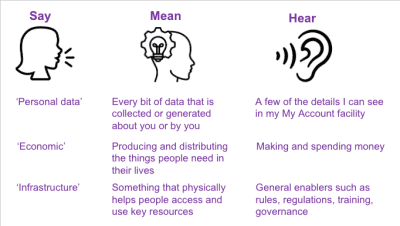
























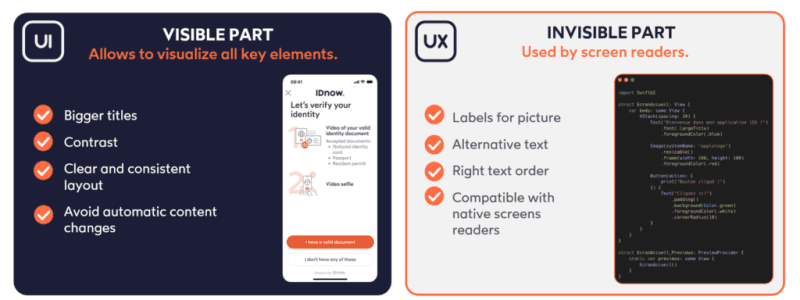








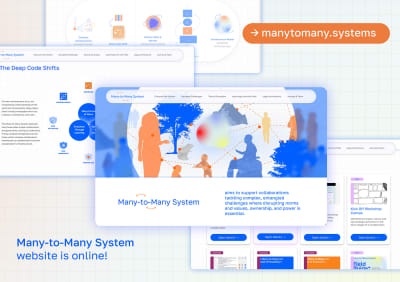













































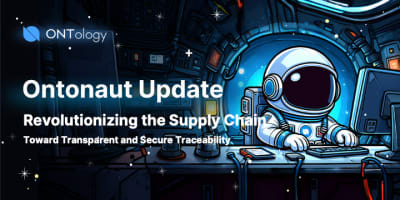









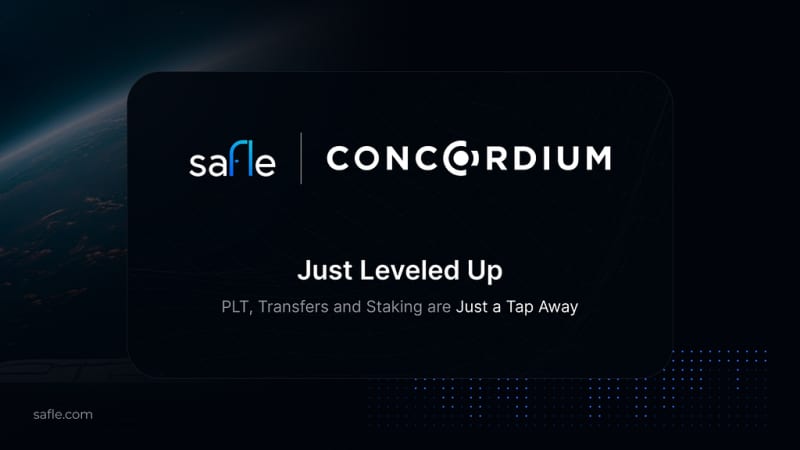










.jpg?width=672&height=215&name=Yubico-1%20(1).jpg)








































































